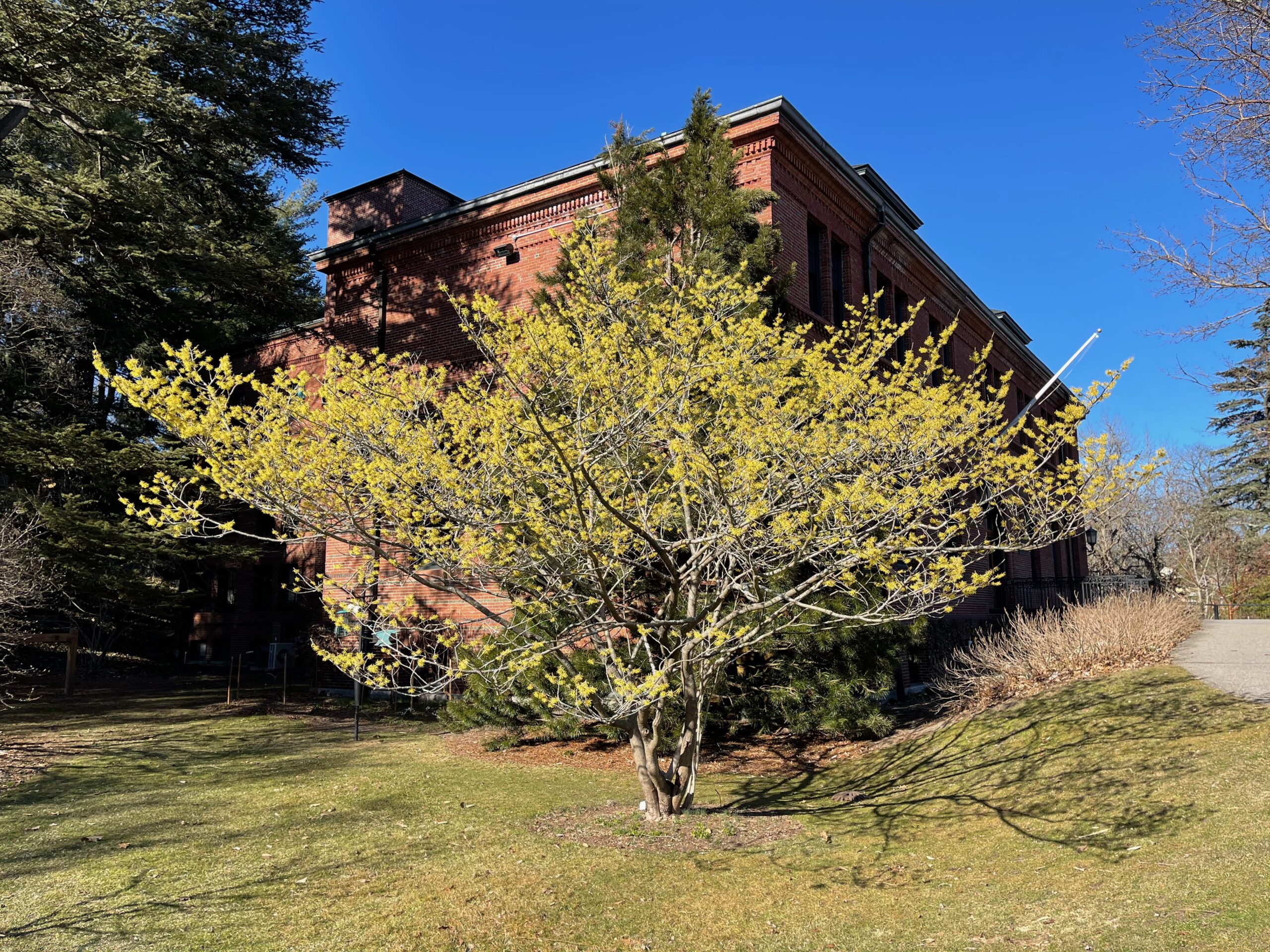
‘Arnold Promise’ Witch-hazel
Hamamelis × intermedia ‘Arnold Promise’

- Accession Number
- The alpha-numeric value assigned to a plant when it is added to the living collection as a way of identifying it.
- Accession Date
- The year the plant’s accession number was assigned.
- Common Name
- The non-scientific name for the plant.
- Scientific Name
- The scientific name describes the species of an organism. The first word is the plant's scientific genus and the second is the specific epithet. This two-word binomial is sometimes followed by other taxonomic descriptors, including subspecies (denoted by "ssp."), variety (denoted by "var."), form (denoted by "f." or "forma"), and cultivar (denoted by single quotation marks).
- Plant Family
- The family to which the plant belongs.
- Propagation Material
- The first part (material code) describes the material used to create the plant. The most common codes are "SD" (seed), "EX" (existing plant), "PT" (plant), "CT" (cutting), "SC" (scion), "SG" (seedling), and "GR" (graft). The second part describes the lineage the plant is derived from. The last part describes the year of propagation.
- Collection Data
- The first part indicates provenance (place or source of origin) using a letter code ("W" = wild, "G" = garden, "Z" = indirect wild, "U" = uncertain). The second part lists the plant source. For wild-collected material, the collector, collection number, and country are given.
- Location
- The location of the plant on the landscape.
ARNOLD ARBORETUM
ORIG FROM E. H. WILSON
‘Arnold Promise’ witch-hazel is the result of a chance hybridization that occurred in the Arboretum’s landscape.
In addition to the careful plant breeding that the Arboretum’s propagators conducted for many years, natural crossings and hybridizations frequently occur out on the grounds.
From 1907-1909, Arboretum plant collector Ernest Henry Wilson travelled through China collecting plant material on behalf of the Arboretum. Wilson collected seeds from a Chinese witch-hazel (Hamamelis mollis) and shipped them back to Boston.
Twenty years later, a witch-hazel grown from that seed was growing in the Arboretum’s landscape among several other witch-hazel species. Arboretum propagator William Judd collected seed from the specimen and germinated them. After some time in the greenhouses and nurseries, seven seedlings were eventually planted as a result.
Years later, the resulting plants displayed unique characteristics, and Arboretum staff began to question whether the plants were indeed regular H. mollis. After some study, they realized that the plants were a hybrid between the Chinese witch-hazel and a Japanese witch-hazel (H. japonica) that had been growing nearby when the seed was collected. Taxonomist Alfred Rehder named the hybrids Hamamelis × intermedia due to their “intermediate” characteristics between the two parent plants.
Initially, the new hybrid plants were not considered to be as beautiful as their parents. Staff recorded that the shrubs’ winter flowers—a hallmark of the species—were relatively few, and often obscured by withered leaves that remained on the plant all winter.
But one specimen stood out from the others. By the late 1950s, Arboretum staff had noted that the hybrid witch-hazel growing alongside the Arboretum’s Hunnewell Administration Building reliably bloomed with larger flowers over a longer period than its siblings. It also appeared to have gained the best qualities of its two parents: it acquired a more cold hardy nature, longer and wavier petals, an attractive vase-shaped form, and lack of fall leaf retention from Japanese witch-hazel. From Chinese witch-hazel, it received more abundant vibrant, fragrant flowers. This plant was exceptional enough to be selected and registered as a cultivar—a version of a plant with distinct, repeatable characteristics—named ‘Arnold Promise.’
Arboretum horticulturist Donald Wyman called ‘Arnold Promise’ witch-hazel the “best of all in flower.” It became such a fixture next to the Hunnewell Building that when the original plant died, a cutting taken from it in 1969 was grown and planted near the original location.
In the 1980s, ‘Arnold Promise’ witch-hazel was circulated to nurseries, where it has become a favorite of gardeners. Now, there are ‘Arnold Promise’ witch-hazels worldwide, serving, as Wyman described the plant, as an “old friend,” a dependable sign that spring is on its way.
Massachusetts
Viewing this plant in-person? Look for these defining characteristics:
About Our Collection
Fun Facts
Stats
- Living Specimens
- Specimens Dead or Removed
- First Addition
- Most Recent Addition
- Tallest Specimen



Living Specimens
| Plant ID | Accession Date | Received As | Origin | Source |
|---|---|---|---|---|


